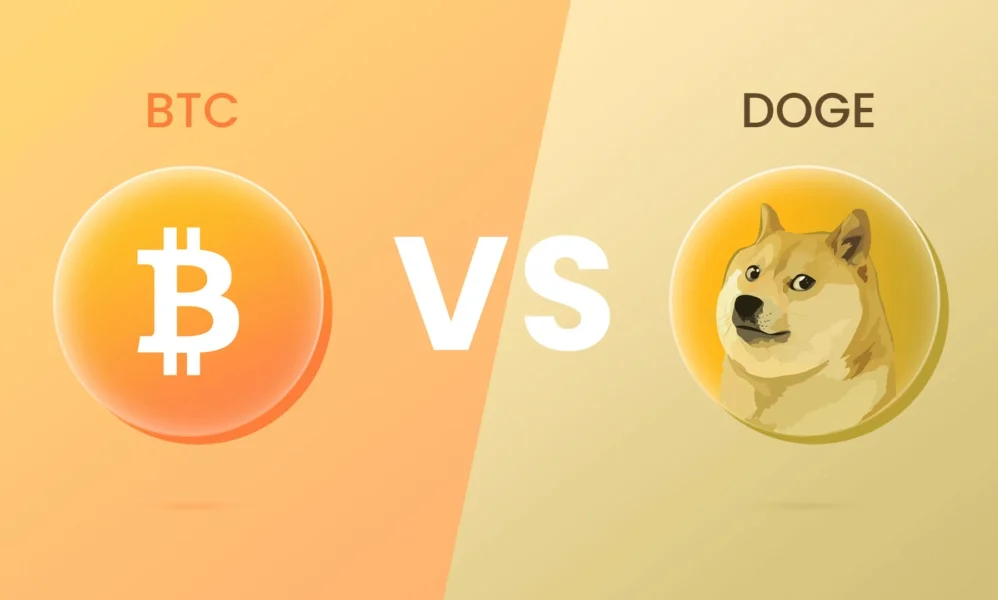Since Bitcoin's inception in 2009, the phenomenon of forks has become frequent, exceeding 100 by 2024. These forks not only create new cryptocurrencies but also spark profound discussions about their necessity and impact. This article will delve into the origins of Bitcoin forks, their main types, and their far-reaching effects on the cryptocurrency ecosystem.

Origins and Motivations of Forks
The motivations behind Bitcoin forks are complex and multifaceted, primarily encompassing technical, economic, and ideological factors. As the number of Bitcoin users increases, scalability issues have become increasingly prominent, leading to longer transaction confirmation times and rising fees, prompting developers to seek solutions. Technical forks often aim to introduce new features or improve protocol performance, such as discussions around increasing block size or modifying consensus mechanisms in response to transaction congestion.
Additionally, ideological differences often lead to forks. For instance, some developers and community members hold differing views on Bitcoin's role as "digital gold" versus its vision as "peer-to-peer electronic cash," resulting in varying interpretations of future development paths.
Major Forks and Their Impact
Bitcoin Cash (BCH)
Launched on August 1, 2017, BCH aims to address Bitcoin's scalability issues by increasing the block size from 1MB to 8MB, hoping to reduce transaction fees and accelerate confirmation times. BCH's initial success led to rapid support from multiple exchanges and a strong market capitalization. However, as competition intensified, BCH faced pressure from other cryptocurrencies like Litecoin (LTC) and emerging projects, leading to a gradual decline in market share.
Bitcoin SV (BSV)
Forked from Bitcoin Cash on November 15, 2018, BSV aims to restore Satoshi Nakamoto's original vision by significantly raising the block size limit, initially to 128MB and later expanding to 2GB. BSV supporters argue that this design can support enterprise-level applications and high transaction volumes. However, concerns over BSV's centralization and security issues have led to widespread skepticism, with Coinbase deciding to cease support in 2023, indicating its precarious position in the mainstream market.
Bitcoin Gold (BTG)
Launched in October 2017, BTG seeks to decentralize mining by changing the mining algorithm to Equihash, countering the influence of ASIC mining and enabling ordinary users to participate. However, BTG has also faced security issues, particularly a 51% attack in 2018, severely damaging its market credibility.
Impact of Forks on Bitcoin and the Market
Do Forks Affect Prices?
Bitcoin forks often lead to price volatility, exacerbated by speculative behavior among investors. The BCH fork in August 2017 resulted in dramatic price fluctuations for both Bitcoin and the newly created BCH, reflecting the market's speculative sentiment towards new assets. While this volatility can yield short-term gains for investors, it also carries significant risks.
Opportunities and Challenges
Forks create new investment opportunities. For savvy investors, newly minted coins post-fork may appreciate rapidly in the short term. Additionally, forks drive technological innovation, propelling the entire cryptocurrency ecosystem forward.
Speculator Strategies
When facing a fork, speculators should monitor market sentiment and technical analysis to develop entry and exit strategies. Price fluctuations before and after a fork offer opportunities for short-term traders, but they must carefully assess market trends to avoid blindly following the crowd.
New Players' Participation
For newcomers, participating in Bitcoin forks requires caution. Those lacking a deep understanding of the cryptocurrency market should consider extensive research before deciding to engage. Understanding the context and market dynamics surrounding forks will aid in making informed investment choices.
Risk Assessment
Bitcoin forks also introduce numerous risks, including heightened market volatility, potential security vulnerabilities, and uncertain future trajectories. Some forks may fail due to a lack of user support, necessitating that investors carefully assess risks to avoid losses from blindly chasing trends.
Editor’s Commentary
The phenomenon of Bitcoin forks reflects the complexity and vitality of the cryptocurrency ecosystem. While forks offer opportunities for innovation, they also present challenges and risks. The future evolution of Bitcoin and its forks will depend on how to balance technological innovation, community consensus, and network security. As the cryptocurrency market matures, finding a sustainable governance model will be key to maintaining the health of the entire ecosystem. In this process, community participation and transparency in governance mechanisms will be crucial factors influencing the success of Bitcoin and its forks.
Related Articles

Differences between Bitcoin and Dogecoin
Bitcoin and Dogecoin are two different cryptocurrencies. Although they share some similarities, there are significant differences at their core. Bitcoin is the first cryptocurrency, designed to be a decentralized digital currency primarily used for value storage and transactions, with a total supply capped at 21 million coins.
October 10, 2024
Where is the best Bitcoin exchange?
Choosing the right Bitcoin exchange depends on several factors, including security, fees, liquidity, user experience, and legal regulations in your location. Below is a detailed analysis of some of the top global Bitcoin exchanges to help you make an informed decision.
October 10, 2024
Future Development Trends of Bitcoin: Increased Global Acceptance and Market Outlook
The future development trends of Bitcoin may focus on several aspects: as global acceptance of digital assets increases, countries will establish clear regulatory policies to promote its legalization
October 9, 2024
How to Buy Bitcoin on the Etoro App?
The most basic way to buy Bitcoin on the Etoro app is to first log into your Etoro account, then search for "BTC" or "Bitcoin" on the market page, and select the Bitcoin trading pair. Next, click the "Trade" button, enter the amount or quantity you want to purchase, set the stop loss and take profit levels (optional), and finally confirm and execute the trade. Please note that Etoro offers CFD trading rather than direct cryptocurrency purchases.
September 27, 2024
What is Fractal Bitcoin?
Fractal Bitcoin is emerging as a promising scalability solution that is gaining widespread attention. It constructs a multi-layered network structure through recursive virtualization technology, not only enhancing the scalability of Bitcoin but also ensuring a secure connection with the main network.
September 26, 2024
